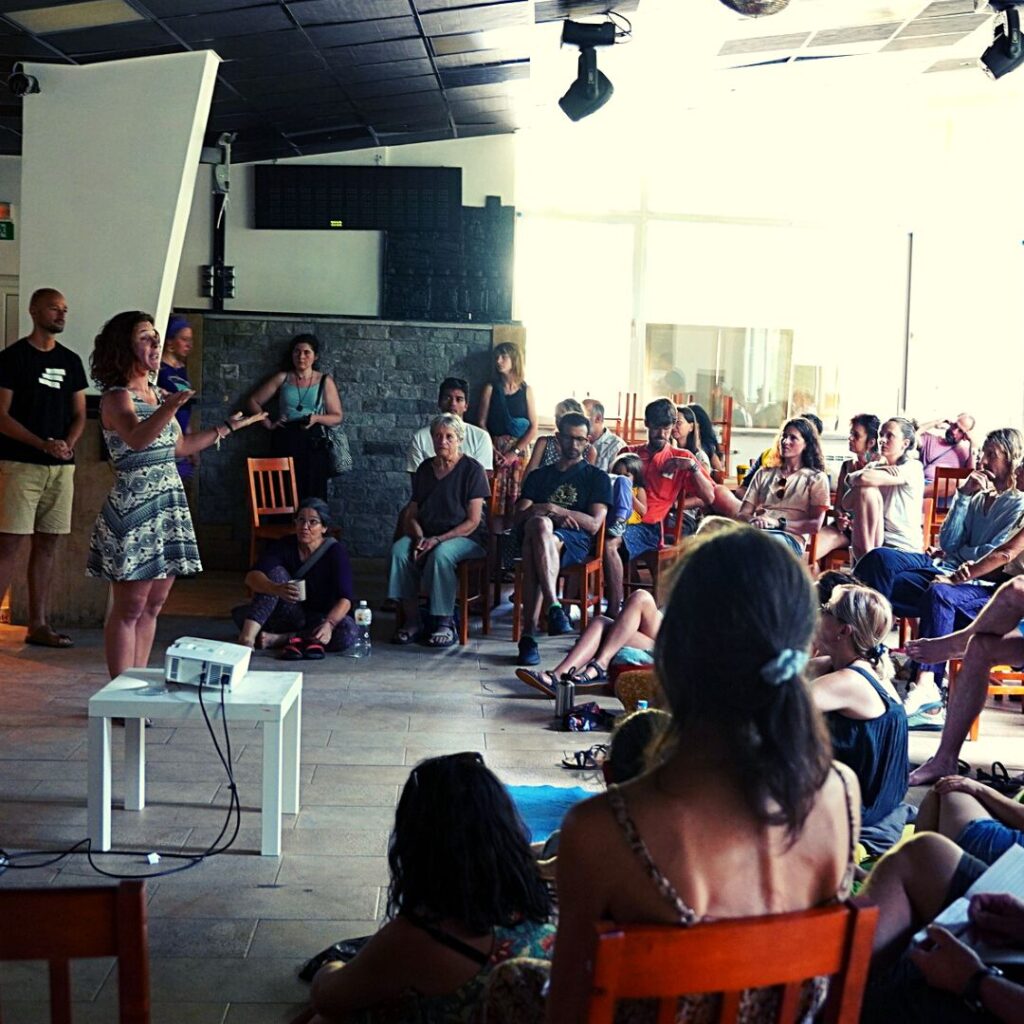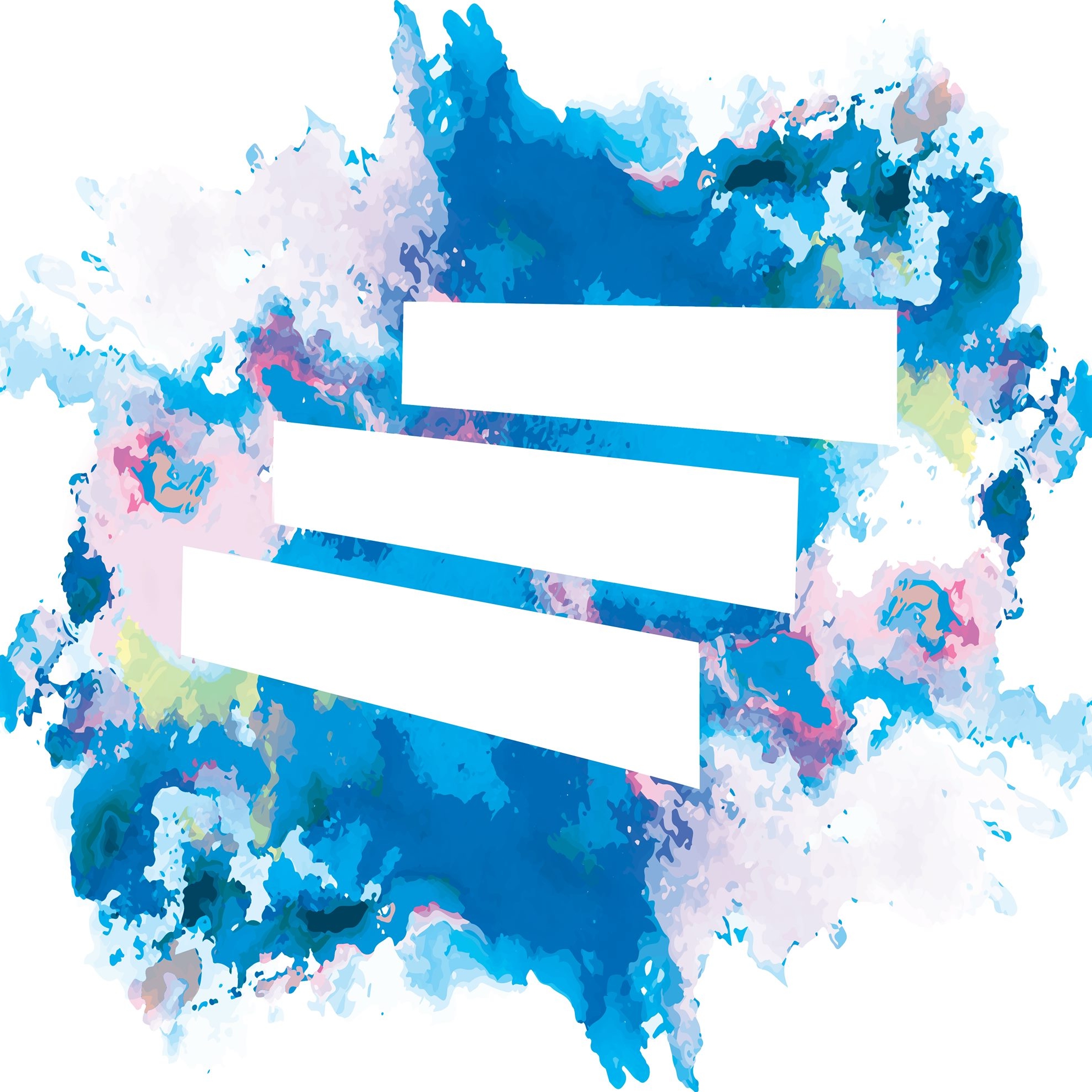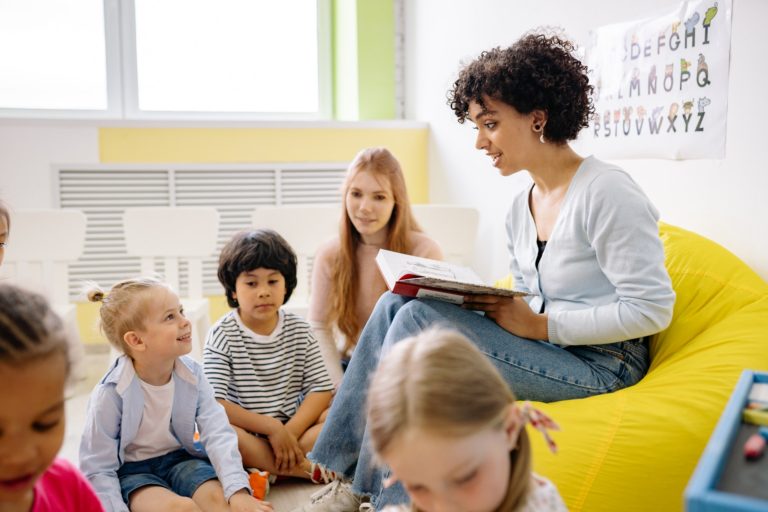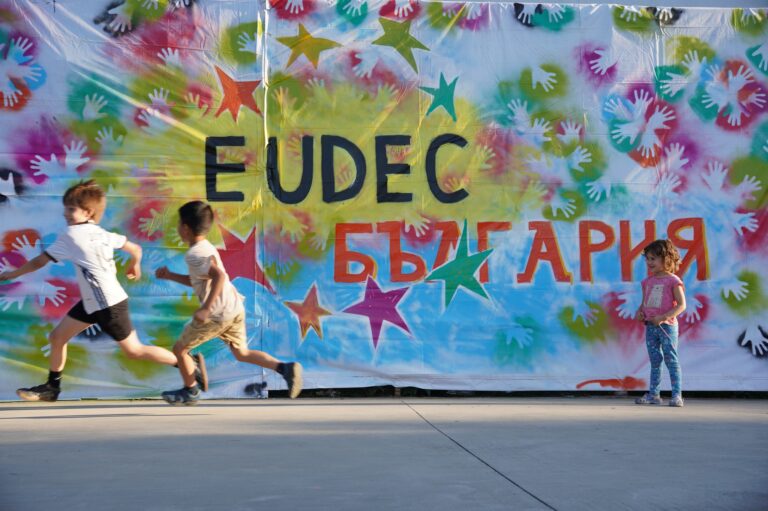
“I am here because of you!”
As Luz and I arrived at the venue of the European Democratic Education Conference (EUDEC 2023), a lady came to greet us with this sentence.
It took me a couple of seconds to make the connection: it was Griffin!
Griffin Toffler had contacted us nearly a year before with a plan to find what a good educational system could look like. And she was interested in Bhutan.
Most countries in the world measure their progress “in money”. This is, they use the change in their Gross Domestic Product (GDP) as a proxy for “progress”. And as you know, we are meant to keep growing to the infinite in a finite world. Or as Greta Thunberg put it:
“We are in the beginning of mass extinction, and all you can talk about is money and fairy tales of eternal economic growth.”
Greta Thunberg
Now, Bhutan seems to be different. In 2008 they put in their constitution that the goal of the government is to improve their Gross National Happiness (GNH). The four pillars of GNH are: sustainable and equitable socio-economic development; environmental conservation; preservation and promotion of culture; and good governance. It sounds quite good, isn’t it!
Is it possible that their educational system is designed to align with these values?
I sincerely don’t know, but Griffin will find out! She has already packed her bags to get to Bhutan and made a stop at EUDEC, where we met in person.
And here is the question that brought us together: How to know if an educational system is geared towards sustainability, holistic development and happiness?
Griffin knows that Luz and I have done a trillion interviews with education pioneers around the world, and thought that we could have some ideas about it. So here our top 5 topics to ask about:
A) TEACHERS
By far the most important factor in a child’s experience at school is their teachers. Relationships are at the core of quality education. And the most amazing thing is that no matter the educational system, you can always do something about it! That is why it is one of our key areas of focus at The Learning Expedition.
Showing humbleness, vulnerability and coherence is key to creating safe and brave learning spaces. The most powerful thing that you can tell to one of your students is “I don’t know” (humbleness). The biggest learning happens when you say “I have made a mistake” (vulnerability). Finally, young people will act according to their values when we (the adults or role models around them) do what we say (coherence).
- How does a person become a teacher?
- How do they continue being teachers? Is there any input from the students?
- How do they develop their key skills? How do they support their personal and professional growth?
B) EVALUATIONS
We get what we measure. One of the key restrictions of the educational systems are evaluations. Evaluations transform learning into studying. Many young people have to stop learning about what they are passionate about to study for an exam.
And many more get told (directly or by a number) that they are not good enough. That negative impact on their self-esteem goes further than a specific subject and ends up preventing them from shining in other areas where they might even be gifted.
On the contrary, take Paula’s case, for example. She is one of the young people that we interviewed at EUDEC23. She has been in a democratic school most of her childhood. Having the chance to choose what to do with her time, she focused on playing with her friends. Only later on, she decided to join lessons and prepare for her school diploma; which she achieved in 3 instead of 10 years (something quite common in these schools). She is currently at a conventional highschool to get the qualifications to access higher education in Germany. She shared:
“I thought that people would notice that I hadn’t followed the standard curriculum, but actually not. I learnt in 3 years what’s meant to be covered in 10 years in a conventional school. In highschool, I am not very good at Chemistry, but I get high marks. My English is quite good, but I don’t manage to get good marks. I don’t really see the connection between what I know and exams. I am just playing the game for now.”
Paula Ucban
- How is learning measured?
- How strict are the evaluation systems?
- Is it only academics that is evaluated or is there any holistic or emotional metric?
- Are there different paths for progression through the educational system?
- Are children divided by age or mastery level?
C) CURRICULUM
Any selection of topics for a curriculum only represents a small (and biased) fraction of the knowledge accumulated by humanity. It is very hard to think of information that would be relevant for absolutely every person. Although we could think about some skills that could benefit many people, such as self-awareness and regulation, collaborating and reaching agreements with others, and finding out how we learn best and perseverating on our goals. What’s more, the world is changing at a fast speed and it is very hard to predict how it will look like with the impact of AI and climate change, for instance.
- Is there a fixed curriculum or is it flexible and adaptable to meet people’s needs, interests and the changing world?
- Does it integrate emotional, personal growth and essential life skills?
- Does it involve the local culture?
- What about community living?
D) GOVERNANCE
The best schools are the schools that are flexible enough to adapt to the needs of their community and context. Flexibility can be built into the way an organization works. Think about why tech start-ups are so innovative: they are designed to continuously reinvent themselves until finding what works. Schools can (and maybe should) work in the same way.
A key here is that no single person knows what to do next in an uncertain scenario. That’s why diversity of perspectives matters. There’s a wide range of practices that can be used to engage the school community in decision making, including democratic assemblies, sociocratic circles and agile change-up sessions.
The program of The Learning Expedition includes a long list of 75 mindset, skills and tools to enable these processes. Maybe that’s why 96% of previous participants increased their confidence in their ability to bring changes and develop new initiatives in education.
- How hierarchically controlled are the schools by the government or local authorities?
- How does decision making work for school governance? Who is involved?
- Do the schools have freedom to adapt to the local needs or do they all follow the same guidance?
- Are the students involved?
E) SPACE
Finally, the learning space matters. This is the building and resources available to people to learn. Think of a time when you felt connected with yourself, when you had a feeling of fulfillment or when you built meaningful relationships. What did it look like?
Learning spaces need to provide possibilities for the diversity of ways in which people learn best, for peer collaboration and learning by doing and being creative. Also, the more we distance ourselves from nature, the harder it becomes to see how our wellness is connected with it.
- What do the learning spaces look like?
- Are they connected with nature?
- Is it connected with the local community?
CONCLUSIONS
Some of these ideas might sound like science fiction to you. And in a way, at a systems level, they are! At a local scale though, we have already seen and studied a diversity of schools and learning communities that integrate many of these principles.
There are two ways to approach this. You can feel like a victim of the system. This is the perfect strategy to keep people inactive. Or as Noam Chomsky put it:
“The smart way to keep people passive and obedient is to strictly limit the spectrum of acceptable opinion, but allow very lively debate within that spectrum — even encourage the more critical and dissident views. That gives people the sense that there’s free thinking going on, while all the time the presuppositions of the system are being reinforced by the limits put on the range of the debate.”
Noam Chomsky
The second choice is to ask the most critical question to yourself: What can I do today to be part of the change?
If this is your choice, make sure to join our communications. We are on this with you.



